Paradise Between the Pitons
Issue 007: St Lucia's imposing volcanic formations bring the drama to Sugar Beach, a five-star resort where winter thankfully doesn't exist.
Introduction
Let’s be real: no one wants to be in New York City in January. By this point every year, the novelty of “festive winter” as I call it has worn off, sun-deprived skin starts to appear translucent under the glare of the subway lighting, and everyone is pining for the days to get longer and the warmth to return again. For a quick vitamin D fix and melanin top-up to make it through to spring, the Caribbean islands tempt many to their tropical climes and crystal clear waters. Trust me, the four-hour(ish) direct flight is well worth it to feel completely removed from the depression of “grey winter.”
For all my global adventures, I really haven’t explored much of the Caribbean. It was always time and cost prohibitive from the UK, plus Europe was literally right there, so it seemed excessive to go all that way for a slice of sun. We did go on a family vacation to Cuba in 2016, before Americans were allowed into the country, but that’s a very different vibe from the rest of the region, for obvious reasons. I also visited Puerto Rico with friends in 2019, which was beautiful and whet my appetite for Caribbean island life. My remaining associations with the region—beyond palm trees, white sands, and turquoise waters—admittedly comes from the swashbuckling Disney movies. But I’m on a mission to change that!
St Lucia
Of the many Caribbean jewels to discover, St Lucia was highest on my list. The small teardrop-shaped land mass is part of the volcanic chain of Windward Islands that separates the Atlantic Ocean and the Caribbean Sea, and sits between Martinique to the north, and St Vincent and the Grenadines to the south. Blanketed in dense rainforest, the island is famous for cocoa production and enjoys a tropical climate year-round—perfect for mid-winter escapes. I was lured in by pictures of the dramatic topography, which I’ve always favored over flat sandy beaches. And this was also the last destination that a close childhood friend of mine visited with his family before losing his battle with cancer, so it holds special significance.
The island’s history is similar to many of its neighbors. First inhabited by Arawak and then Carib peoples, before the Europeans arrived in the 17th century, St Lucia changed hands between the French and British multiple times before the latter gained steady control in 1814. Yes, there were pirates involved along the way too. It wasn’t until 1979 that the island achieved full independence from Britain—one of the last Caribbean countries to do so—and today it’s a diverse and culturally rich nation with a tourism-driven economy.
St Lucia’s Arawak name, Hewanorra, means “island of the iguanas,” and is also the moniker given to the small, no-frills airport located at its southern tip. The main roads run from here up and down the coasts, through small hamlets of colorful houses dotted across the mountainous terrain. We took the western route up to the port town of Soufrière, which means sulphur in French and refers to the area’s pungent active volcanic emissions—although don’t panic, the last major eruption was in 1766. Although only 18 miles from the airport, this windy stretch of sometimes poorly maintained tarmac takes a good 40 minutes to travel along, but it’s a scenic ride if you don’t get car sick.
On the southwestern coast, the twin volcanic “plugs” known as the Pitons are among the most iconic natural formations in the Caribbean. There’s even a local beer named after them, which is similar to Corona and very refreshing (I enjoyed several during my stay). The smaller, steeper Petit Piton is the northerly peak, while the Gros Piton to the south is a popular hiking destination. (Had I been staying longer, I would’ve embarked on the trek to the top.) And between these two imposing, majestic mountains, nestled against their precipitous slopes, is the resort I came to scope out.
Sugar Beach
The Sugar Beach resort owes a lot to its fortuitous location. Operated by the Viceroy Group, the expansive property extends from the white-sand beach and up the valley and surrounding slopes into dense vegetation. This was once the site of a sugar mill, hence its current name, and the ruins of the original stone building still sit amongst the tropical plants and newer constructions. A total of 130 cottages and villas are scattered across the vast 100-acre estate, which requires a fleet of golf carts and vans to maintain and transport guests around.
The primary attraction is of course the beach, where rows of sun loungers are arranged under thatched canopies to face the brilliant aqua waters. For those who aren’t so keen on the sand and salt, a large pool area is positioned directly behind, with bar and restaurant areas filling the spaces in between. A series of grassy lawns step gradually up the valley to a pond in front of the central, main building, in which the lobby, hotel store, and more dining and drinking spaces can be found (more info below). Several other structures house the fitness center, spa, and other amenities (also below), while the majority of the accommodation is tucked into the trees up the hillside.
Due to the scale and the terrain, the best way to get around is via the shuttles that whizz up and down the hills to take guests from A to B, sometimes via C and D depending on how busy they are. I always prefer to walk, so a couple of times I attempted strolling to breakfast, but it was difficult to navigate the winding roads, and nothing connected geographically as I thought it should. The trek down to the beach wasn’t too bad, but the climb back up really took it out of me in the humidity.
Architecture & Design
The majority of the buildings across Sugar Beach, including the communal facilities and most of the villas, are designed in the Colonial Caribbean style: white-washed clapboard exteriors, large verandas, pitched tiled roofs, decorative balustrades and fascia trims etc. The furniture also follows this aesthetic, so there’s a bounty of rattan chairs, and most interior spaces have vaulted ceilings—which are typical of the Caribbean because they allow air to circulate better. Some of the areas have a more modern look, like the outdoor swimming pool, where a black and white theme carries across the furniture to contrast the turquoise tiles under the water.
Sugar Beach’s owners use the property to display their impressive contemporary sculpture collection, which includes large-scale works by the likes of Daniel Arsham, Anish Kapoor, and more that can be spied around the grounds. Every now and then I’d stumble upon a giant head partially buried in the ground (Arsham) or a vertical stack of reflective balls (Kapoor), which didn’t really fit the rest of the vibe, but I guess if you need to store these pricey artworks somewhere, a private hotel property makes the most sense for insurance purposes.
Guest Rooms
Sugar Beach offers several accommodation categories, including guest rooms in the Sugar Mill building, a variety of cottages and villas that vary in scale and features, a collection of beachfront bungalows, and then a host of residences that range from one to four bedrooms. Since many of these are away from the main resort facilities, a butler service is on-hand to provide assistance, organize transport, book experiences etc. through an app that was a little confusing to use, but I had no real issues with.
Again, due to the scale of the property, the villas are grouped into numbered zones that help the shuttle drivers to coordinate where to drop-off their passengers. For the most part, the higher the number, the higher up the hill you are. My villa for the three-night stay was in the “sixes,” so about halfway, which was perfect for ocean-Piton view combo without being too far from everything.
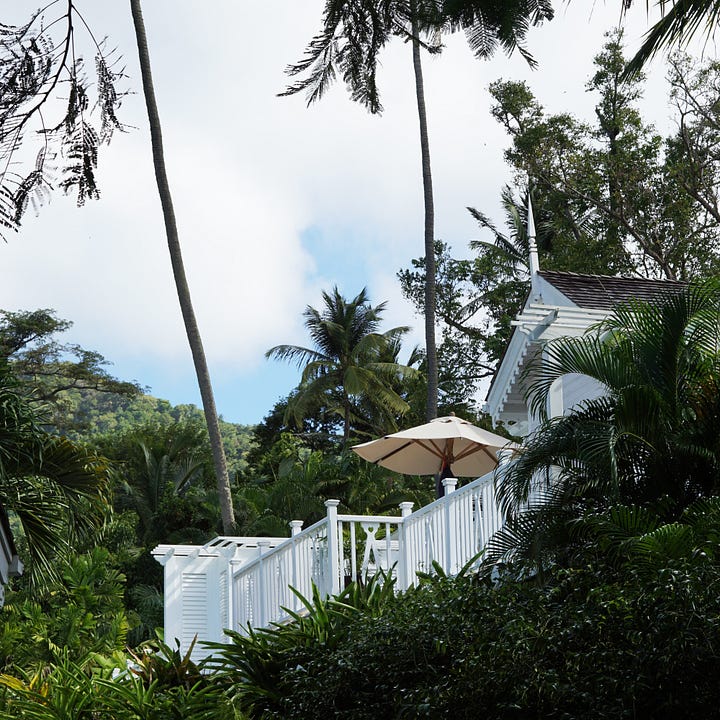
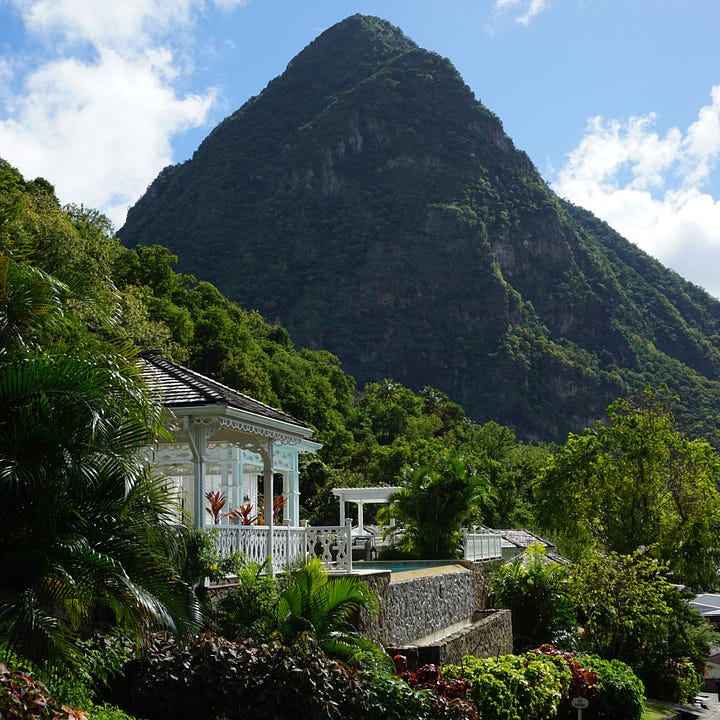
I stayed in a Superior Luxury Villa, which normally starts at around $1,500 per night in peak season. It featured a large bedroom, a separate living room, a bathroom, and a terrace with a covered seating area and a private plunge pool that faced the Petit Piton. The setting was obviously stunning, and the villa was super spacious, but I have the say that the decor could’ve used a little TLC. Particularly in the bathroom, the flooring was scuffed, the fixtures were outdated, and the shower light flickered. Time for a refresh, maybe?
I did love the four-poster bed, which was super comfortable, and waking up to the view of the ocean, palm trees, and mountain through the patio doors is how I’d prefer to spend every morning if I could. The outdoor space was also very private and not overlooked, so I could sunbathe during the day and dip in the pool late at night without the concern of prying eyes. Ideal for honeymooners!
Spice of Life
The primary reason for this trip was to attend the opening of the newest addition to Sugar Beach’s Beachfront Collection, which I covered for Galerie magazine. This vast 35,000-square-foot residence, designed by Botelho Wood Architects, is named Spice of Life after a book written by Sir Harold Mitchell (the grandfather of Sugar Beach’s British-Bermudan owners, the Greens). The two-story oceanfront building can comfortably host up to 18 guests across its nine bedrooms, and sits in stark contrast to the other structures across the resort. Its contemporary architecture comprises natural materials like exposed stone and wood, while the interiors are intentionally neutral and feature custom furniture throughout. No Colonial design hints here.
Indoor-outdoor living is the name of the game here, with most of the rooms opening onto large terraces, and the main living area extending to a stepped deck and an infinity pool with the sea and the Petit Piton in full view. There are pavilions for BBQ lunches and a large table for al-fresco dining, plus private access to the sands below. The guest rooms are arranged in wings either side of the communal spaces, and each has a slightly different layout, with options for king or twin beds depending on the occupants. A couple of rooms also have outdoor showers in stone enclosures, where private spa treatments can take place.
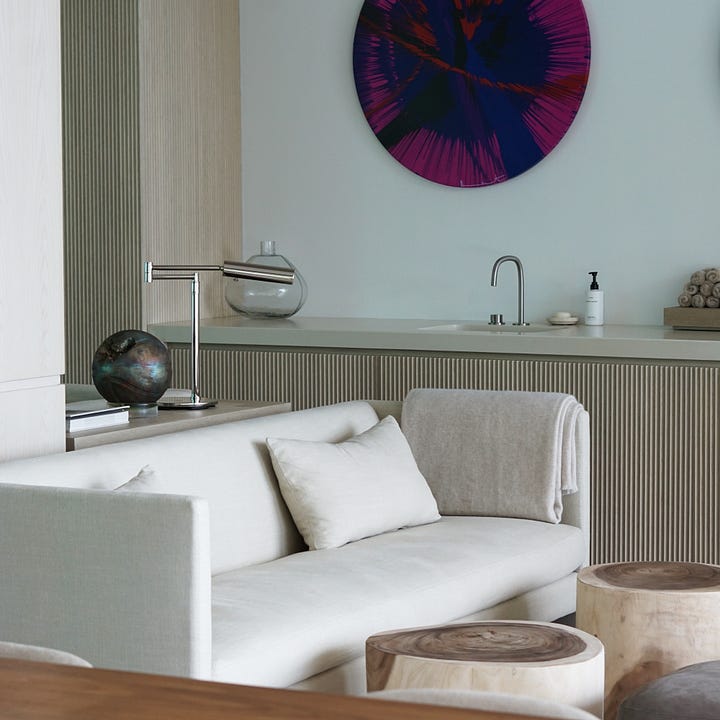
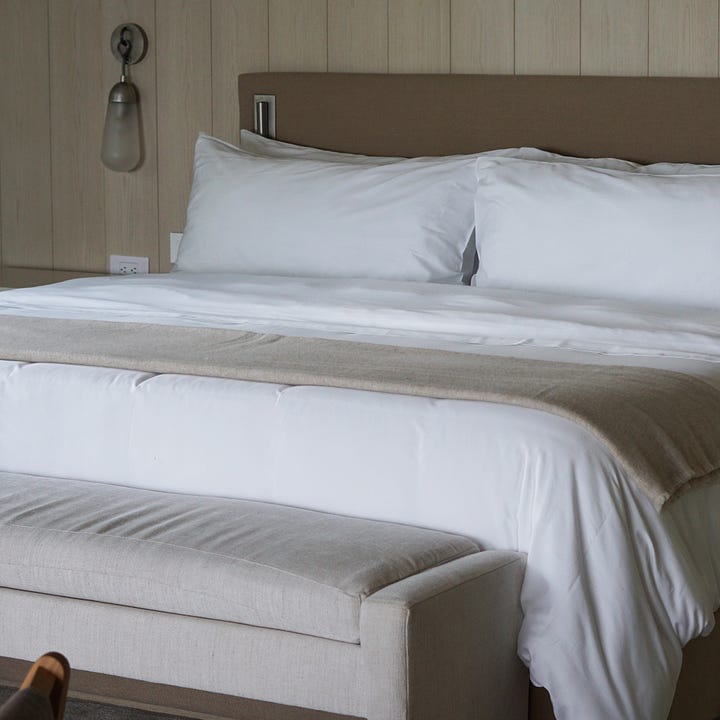
Like the resort overall, Spice of Life is filled with a staggering contemporary art collection—think Yayoi Kusama, Damien Hirst, KAWS, and many more. None of these I would’ve personally curated for the villa’s serene spaces; pieces by local artists would’ve been more fitting (and supportive) than displaying so much commercial work IMO. But hey, lots of people in the target tax bracket love it. The pièce-de-résistance is an oval James Turrell light sculpture installed at the head of the dining table in the main space, which is even visible from boats way out across the bay. Its intense, shifting hues are certainly a conversation starter over dinner.
Spice of Life guests of course have access to all of the resort’s facilities, as well as private chefs and butlers to take care of every detail of their stay. Each booking also includes a private fireworks show from the dock below the residence, and since we were attending the official opening, we were treated to the inaugural display. Bluntly, this is luxury way beyond what the vast majority of us will ever get to experience: the price for a week’s stay is the equivalent of a modest house. But it was fun to cosplay as a billionaire’s wife in the residence during our time at Sugar Beach, waving my champagne around while I floated on the pool.
Dining & Drinking
Sugar Beach has no less than eight restaurants on the property, each offering a different cuisine. The daily breakfast buffet is served at The Terrace, overlooking the property towards the sea from the main building. The selection of fresh fruits and Creole breads, along with a strong coffee, was all I needed to start my day, but there were plenty of hot options and a crepe station for those in need of more sustenance.
Our group also ate dinner at Jalousie Grill, the casual beachside spot that may have been better at lunch for the view, though the tandoori masala kingfish I had was delicious. Most nights we enjoyed drinks in the adjacent bar, which stays open late and occasionally has a DJ spinning a very wide range of tunes, or a live band, depending on your luck. The rest of our meals were privately catered at Spice of Life by the chefs from the various other eateries. These include Saltwood, the fine-dining concept situated above The Terrace and next to the Saltwood Bar, where pre-dinner canapés and aperitifs are served.
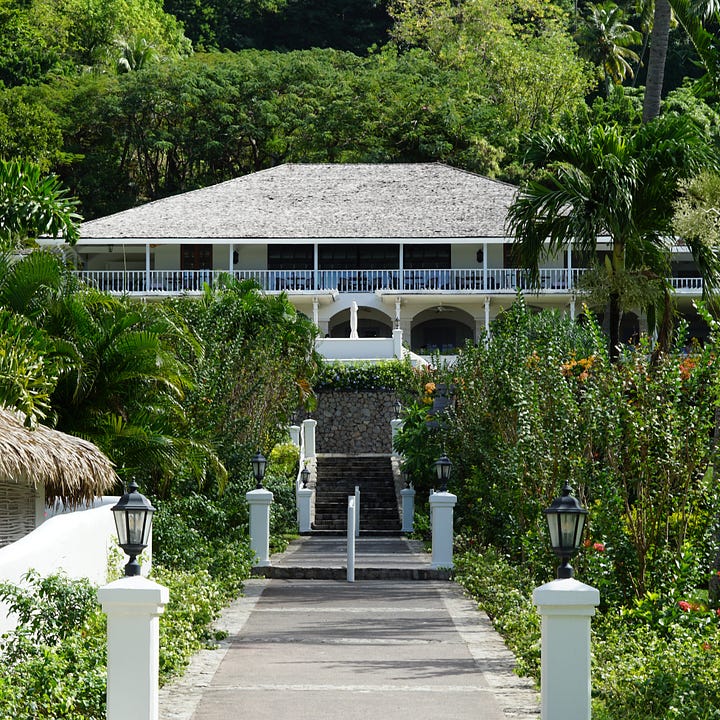
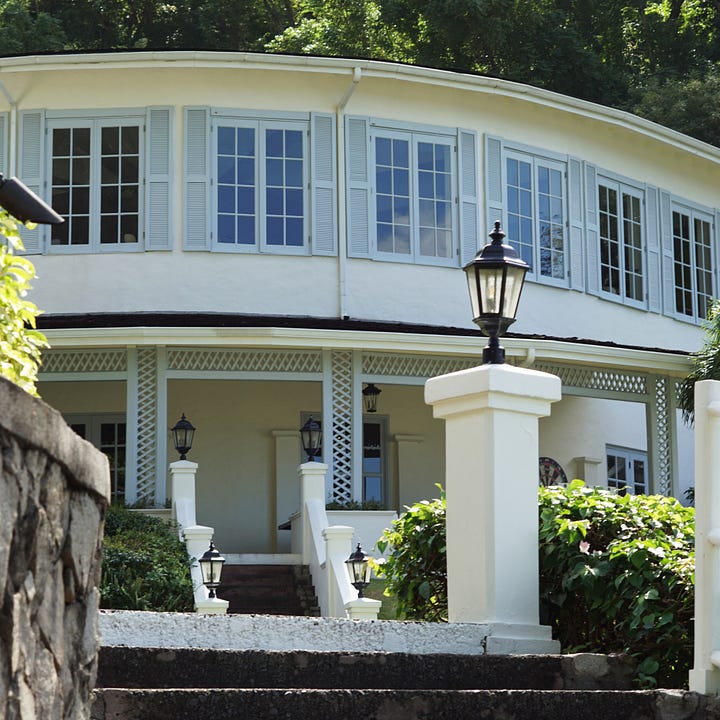
Then there’s dinner-only Cane Bar, which has a tapas-style Southeast Asian menu, and Bonté, which is back down at the beach and offers Caribbean food throughout the day. Those relaxing on the beach can also order bites and drinks to their loungers—the fish tacos were a hit—and of course there’s room service. Call me simple, but the best food we had was from Jetty Burger, where smashed burgers are made fresh on the hotel’s South Pier and can be enjoyed on bar stools overlooking the water. Paired with a Piton beer or two, this was a perfect lunch.
Due to the nature of the trip, we didn’t venture outside of the resort to eat. However, I asked a couple of the chefs for their recommendations just in case, and they suggested Martha's Tables, The Mango Tree, and Country Breeze as solid local options to try nearby.
Amenities & Activities
Sugar Beach is very much a resort, and there’s plenty to do over several days without having to leave the property. The fitness center is very well equipped, and had everything I needed for my daily workouts—although I only went once. Walking around the property burned more than enough calories, however, so I let myself off the hook.
I was treated to a full-body massage at the Rainforest Spa, which is accessed via a snaking thatched tunnel that is atmospherically lit with candles, creating a vibe that feels more like Southeast Asia than the Caribbean. The changing areas and treatment rooms occupy a cluster of tree houses connected by wooden walkways over a cascading stream, providing a beautifully soothing soundtrack to my 60 minutes of relaxation. The overall experience was very immersive, and I felt very rejuvenated afterwards.
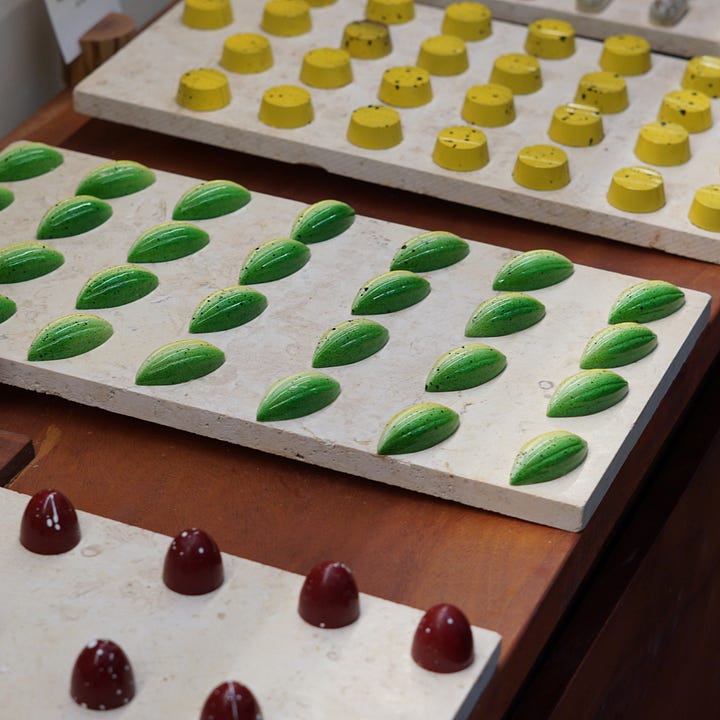
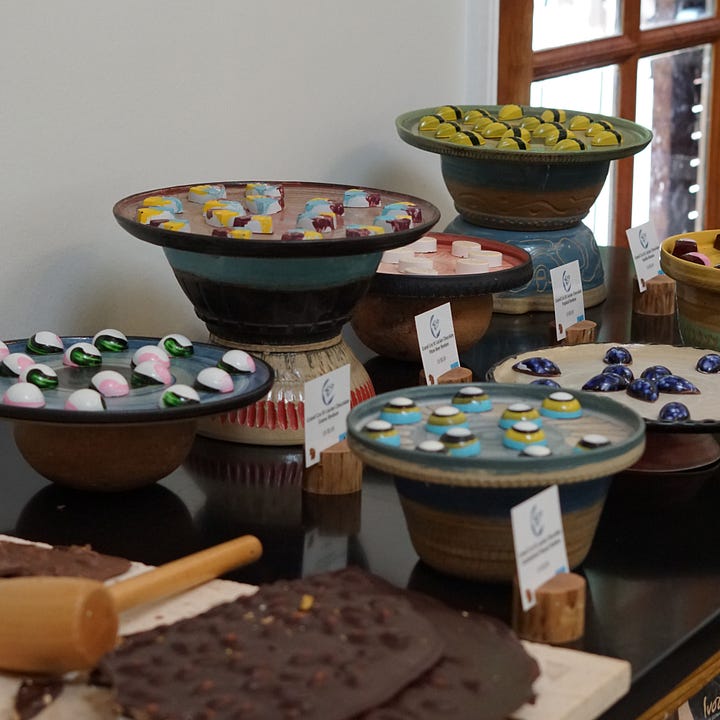
Another part of our itinerary involved a chocolate workshop at the Cocoa Mill, a new experience offered to Sugar Beach guests this year. In a small building close to the historic mill, a small group can don their chef hats and aprons, then decorate, pipe, and flavor bars of chocolate in a set of three molds. Admittedly, I was hesitant about spending an hour inside when I could’ve been on the beach, but it was actually a very enjoyable class that facilitated a fun creative moment, and also resulted in ready-made gifts to take home.
Further up the mountain, a newly renovated Racquet Club offers tennis, padel, and pickleball courts. My hand-eye coordination is abysmal, so I didn’t bother venturing up there, but others told me that the facilities looked very swish and the view was particularly amazing from this higher vantage point. The Caribbean waters are so clear that snorkeling was highly recommended, as was the hiking I mentioned earlier, but sadly there wasn’t time to try either.
Catamaran Capers
One of the most memorable activities of our trip was a sunset catamaran cruise, which departed from Sugar Beach’s water-sports dock and sailed us around the bay, before heading out past the Petit Piton and north up the coast. It rained on and off for the duration, but we sipped our champagne and shotted our rum undeterred—literally not letting the weather dampen our spirits—and dived in and out of cover as needed. The views from the water were even more striking than on land, and we spotted several cruise ships that looked straight out of Pirates of the Caribbean, so my inner child was giddy.
Manned by a cheerful crew, our catamaran took us past a few other luxury resorts, including uber-chic Jade Mountain, and several secluded beaches, before dipping back into Soufrière Bay. By the time we headed back past the Pitons, the rain had mostly cleared and the sky gave us a dramatic finale as we relaxed on the hammock nets at the front of the vessel. I’d highly recommend this experience to anyone visiting Sugar Beach or another hotel on the island. There’s always something so special about sailing, particularly when the landscape is so stunning, and the regional association with pirating is so strong. It topped-off an amazing trip that made me completely forget it was January, until I landed back into the grey reality of JFK airport. Quick! Book the next one!
Thank Yous
To the Purple PR team: Ally Berkowitz, you’re always a such riot; Jenna Miller, I loved getting to know you better; Katherine Bening, those synchronized swimming lessons were top notch. To my trip mates: thank you Ellen Eberhardt, Adrian Madlener, Susmita Baral, Jonathan Soroff, and Rachel King (who was also in São Paulo with me!). Special thanks to Catie Case and Nate Storey for bringing the goodies, and Vassi Chamberlain for telling me I reminded her of Jonathan Bailey—biggest compliment ever! Bradley Cochrane, thanks for tagging along with our group and being my catamaran net buddy. And to the Sugar Beach team: James Wyndham, Sophie Paterson, and all of the staff, thank you for being so kind, friendly, and fun to be around. I hope you’ll have me back again soon! D x





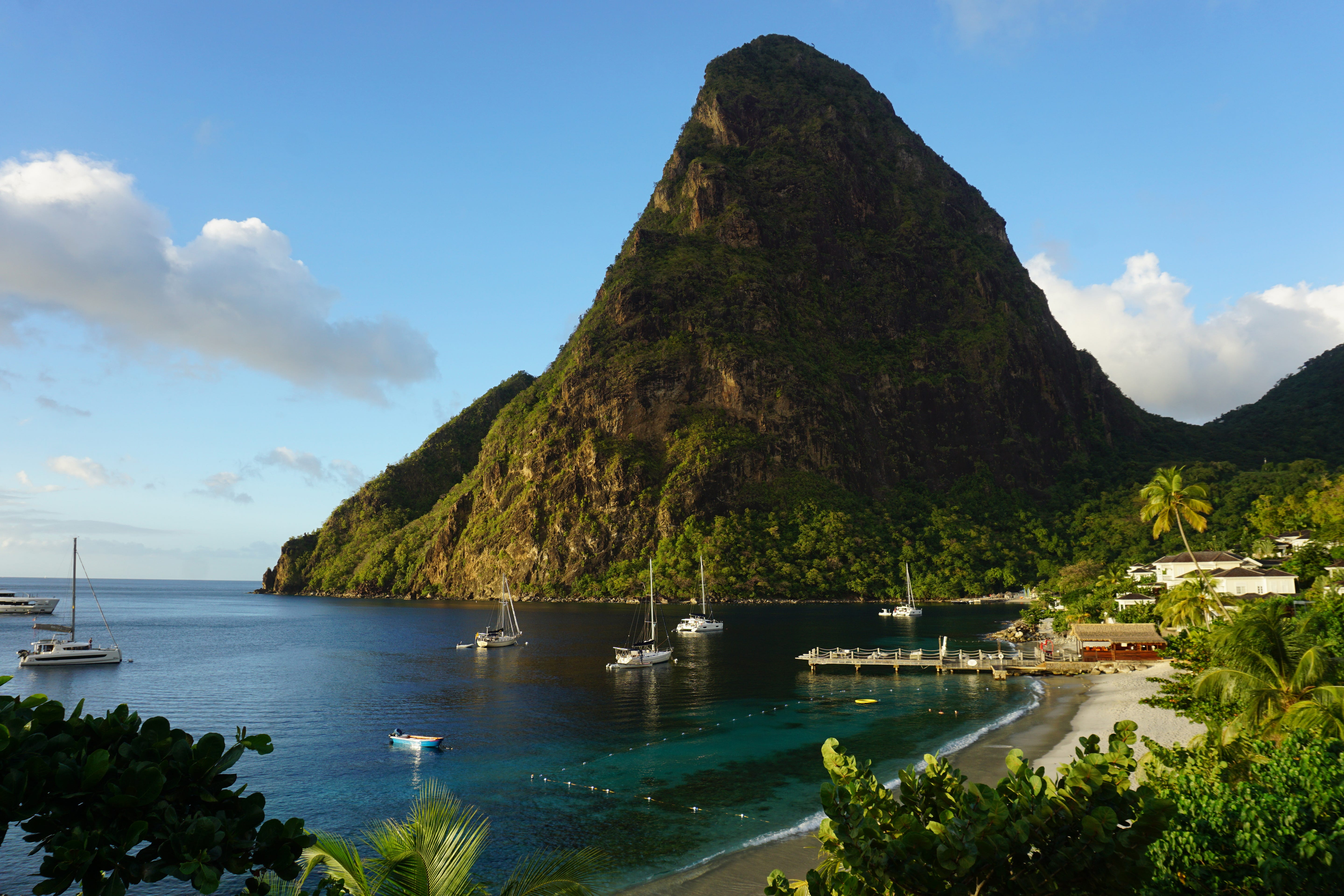
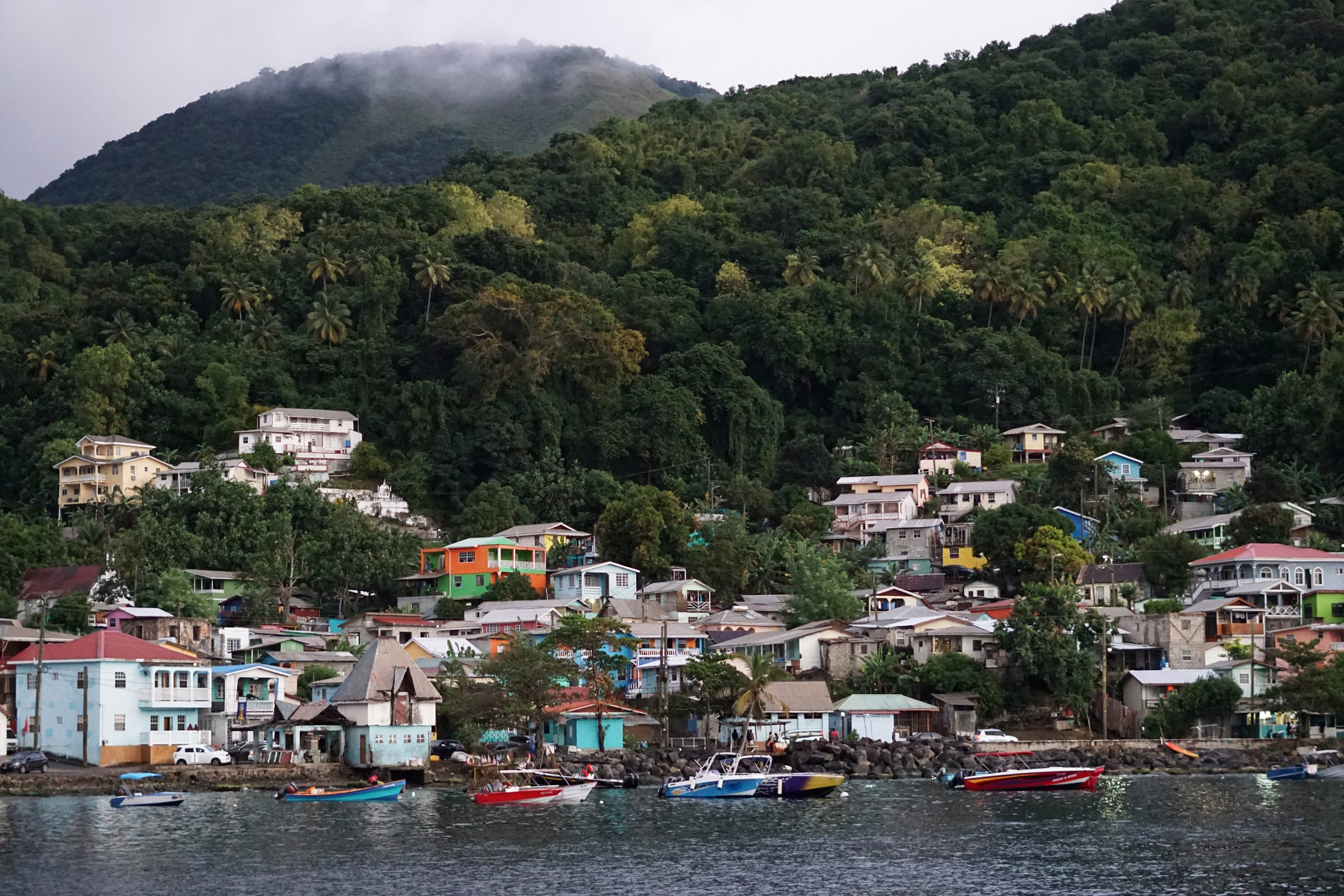
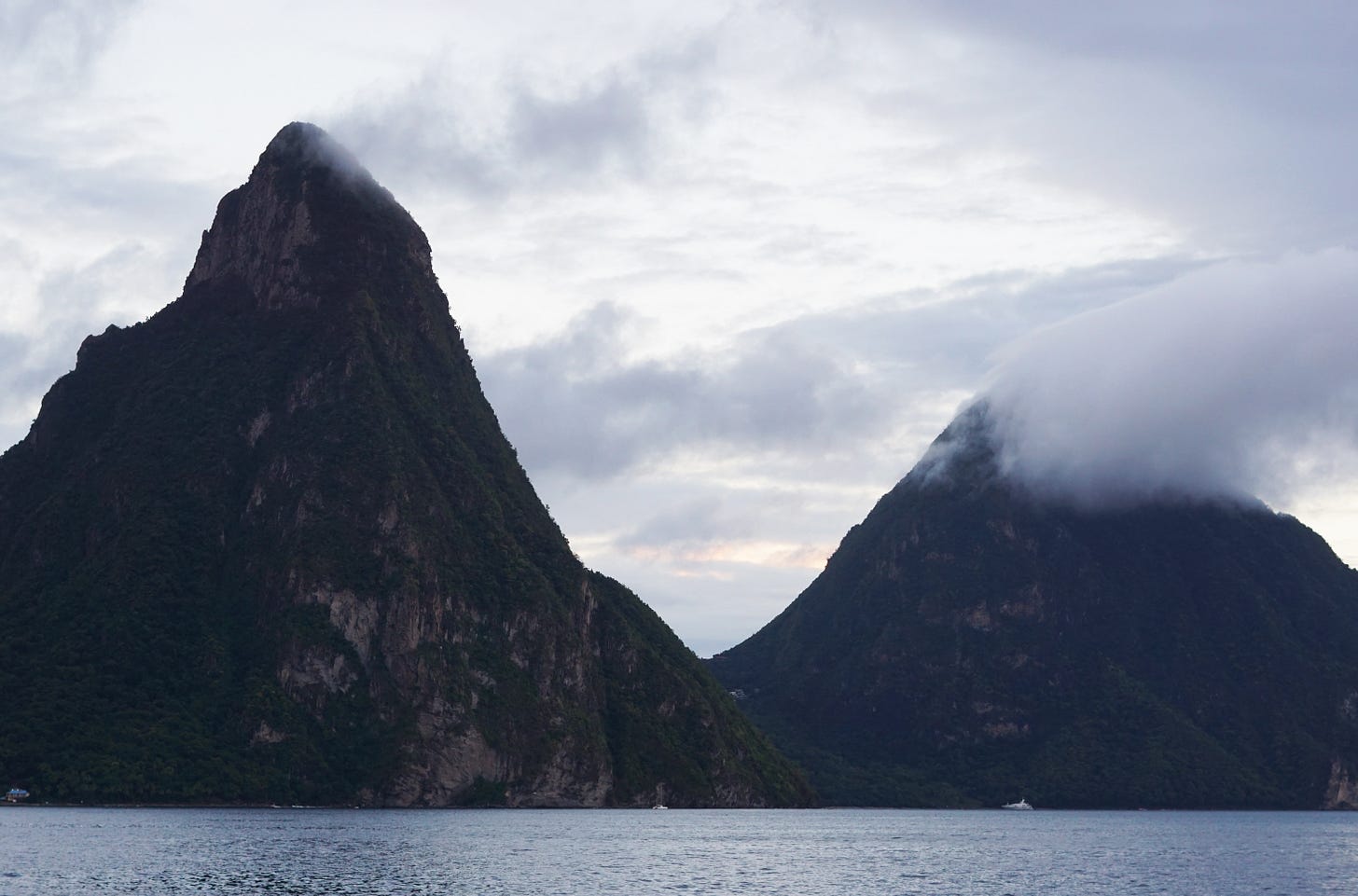

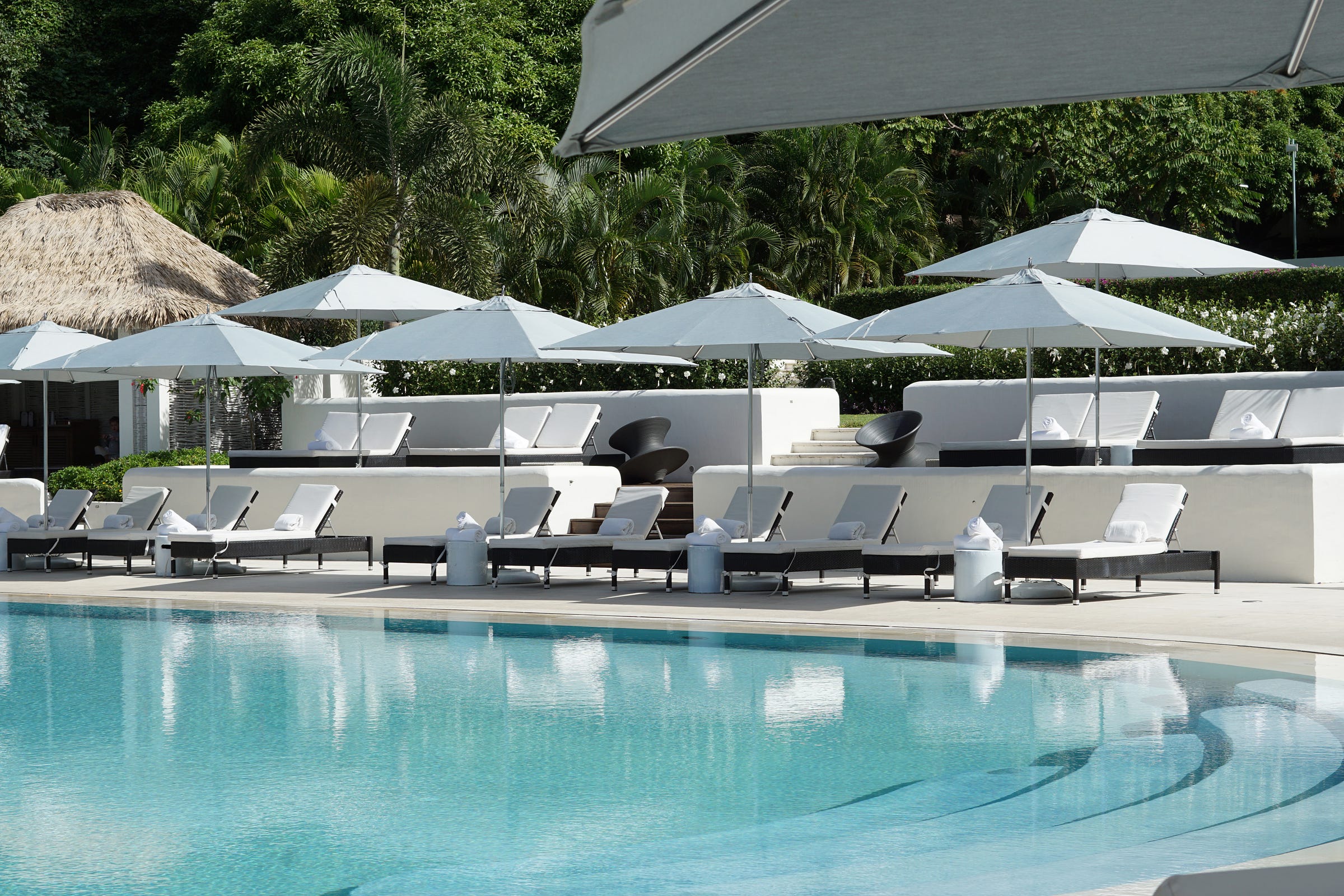

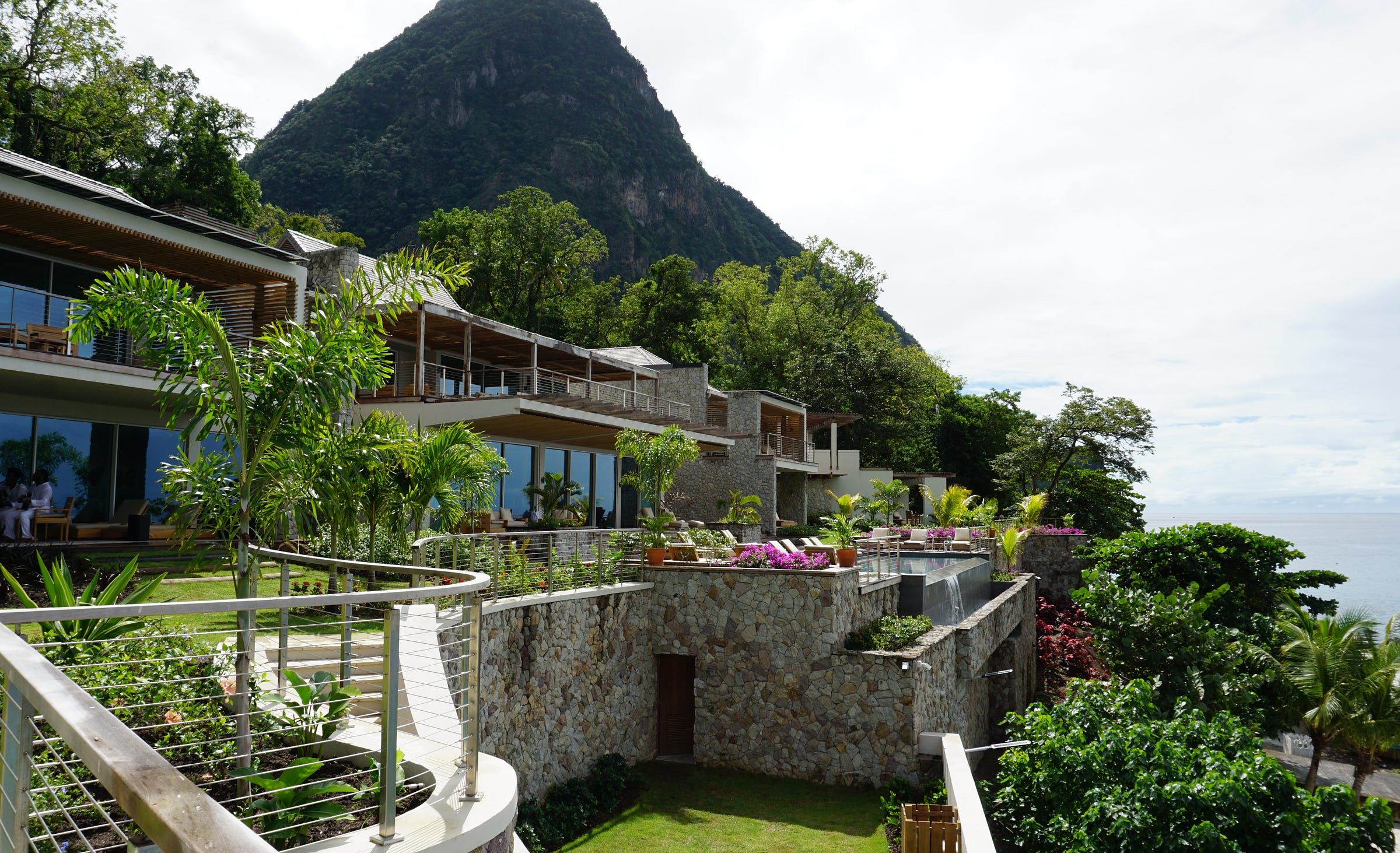
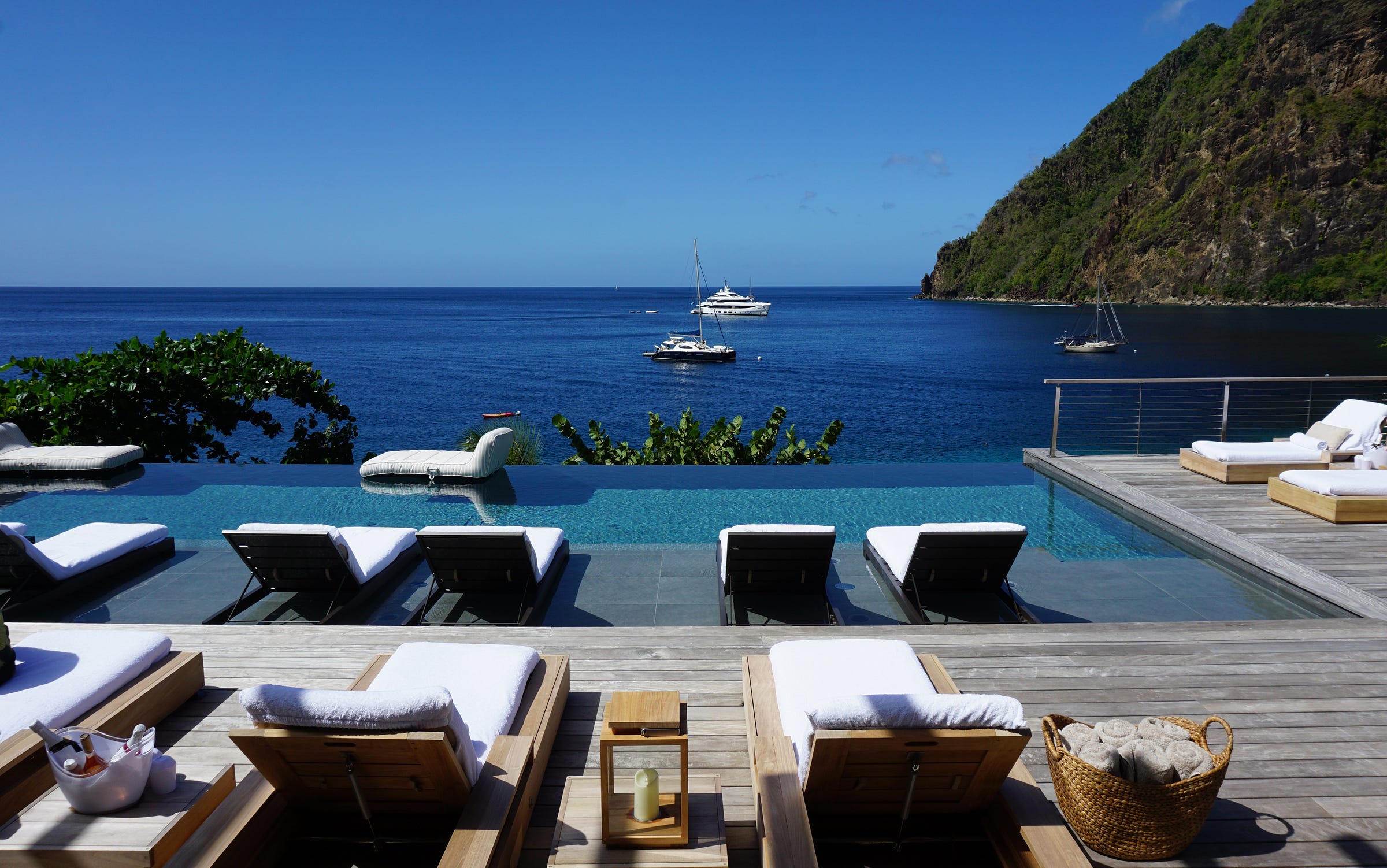
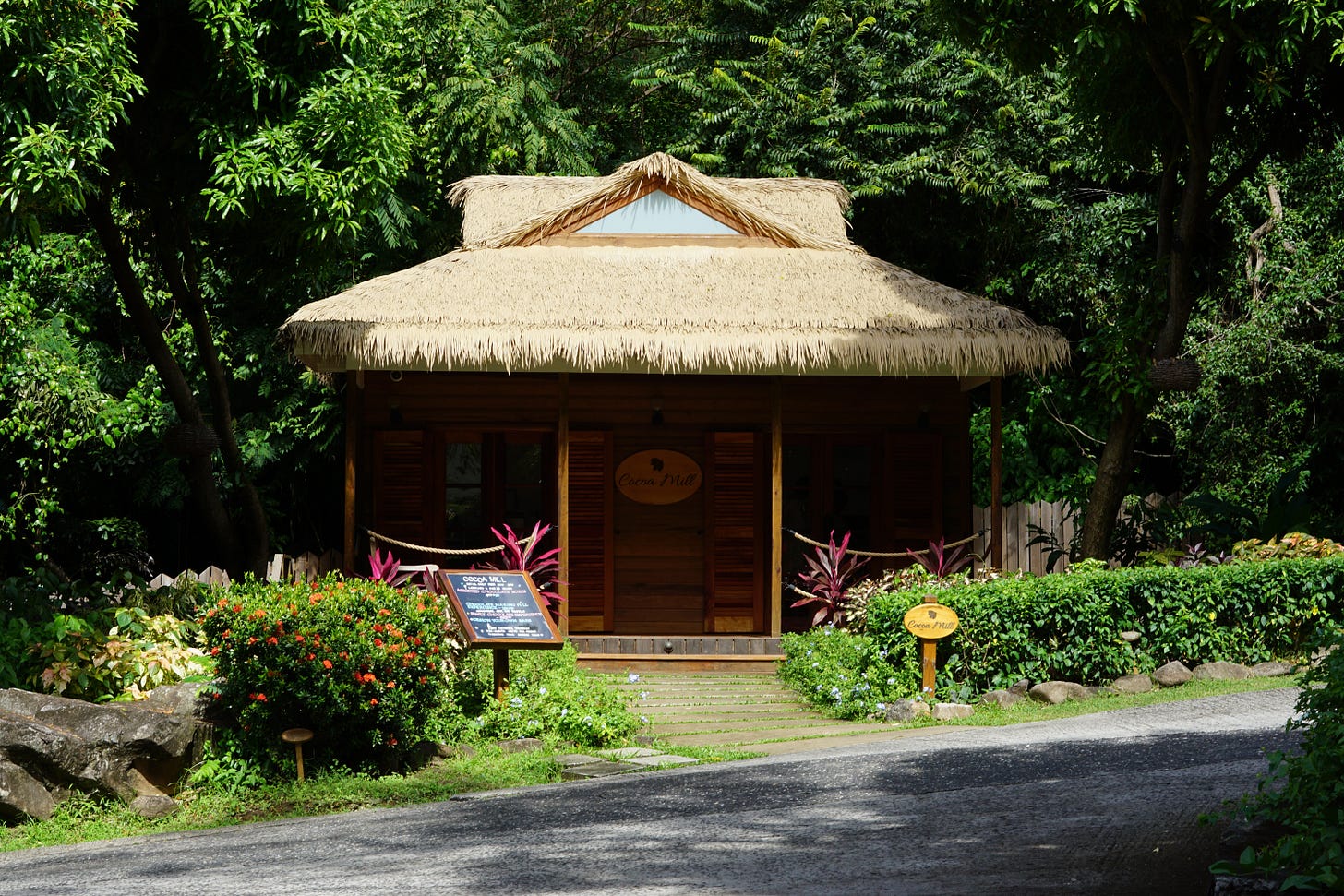
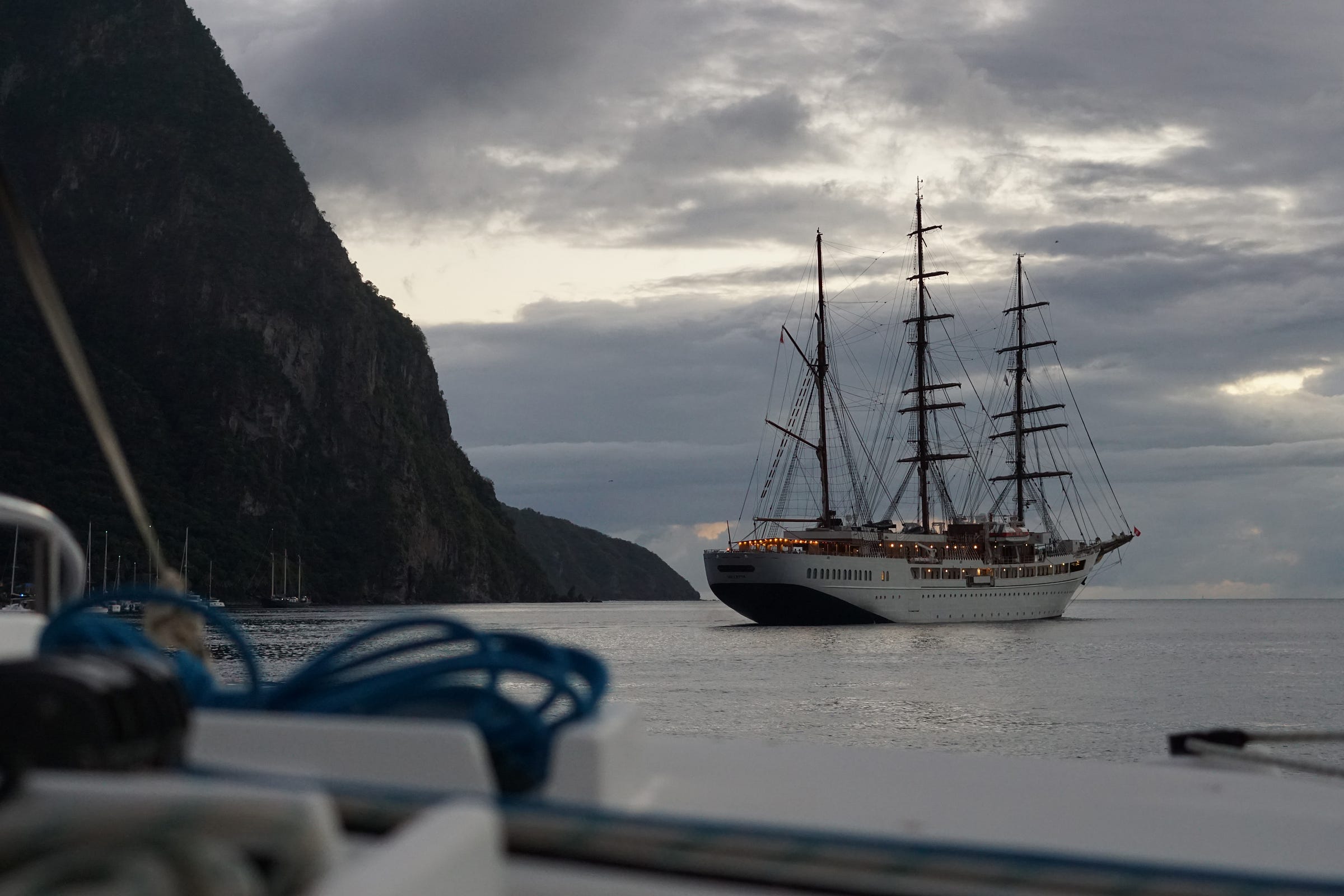
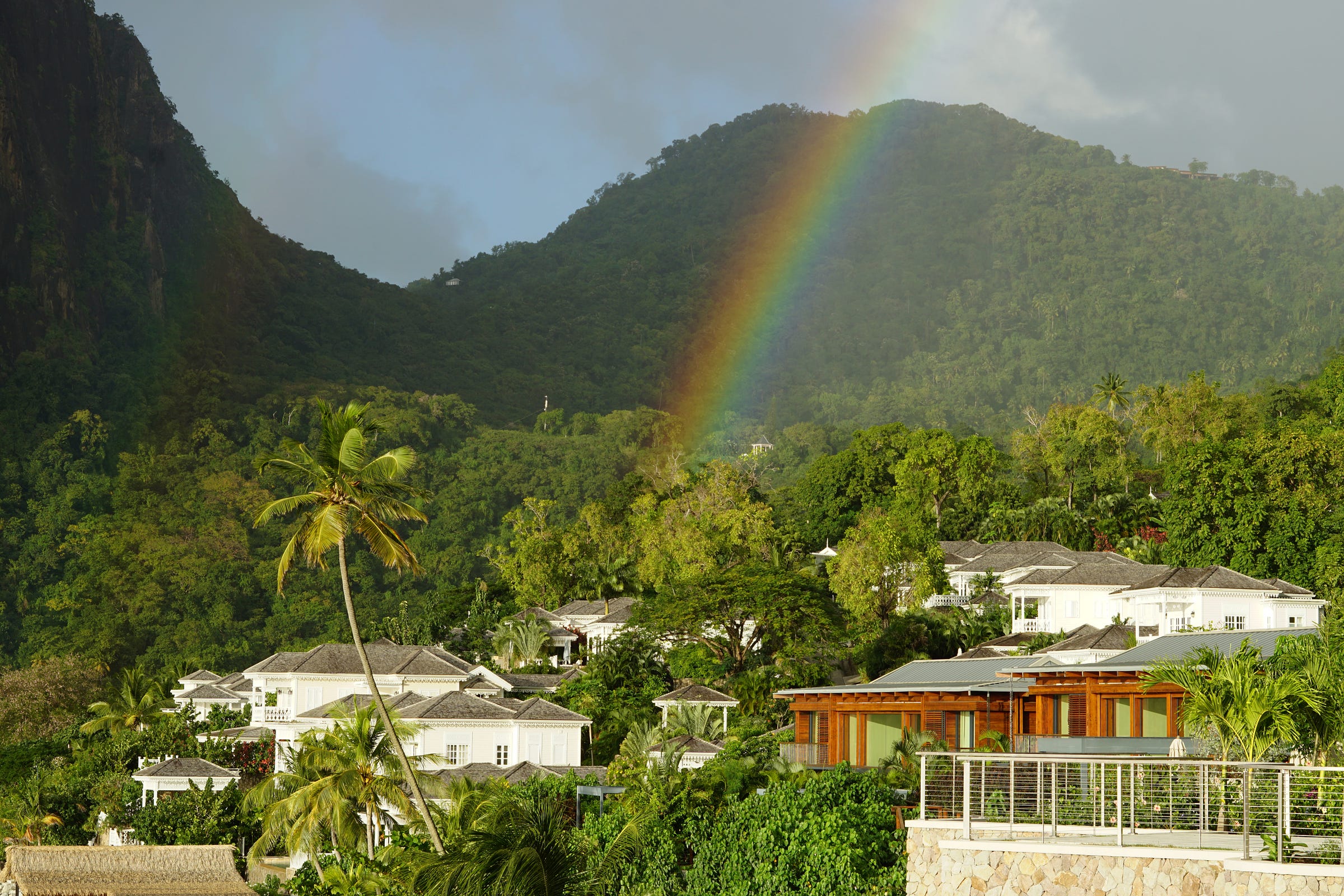
Definitely on my list to go !